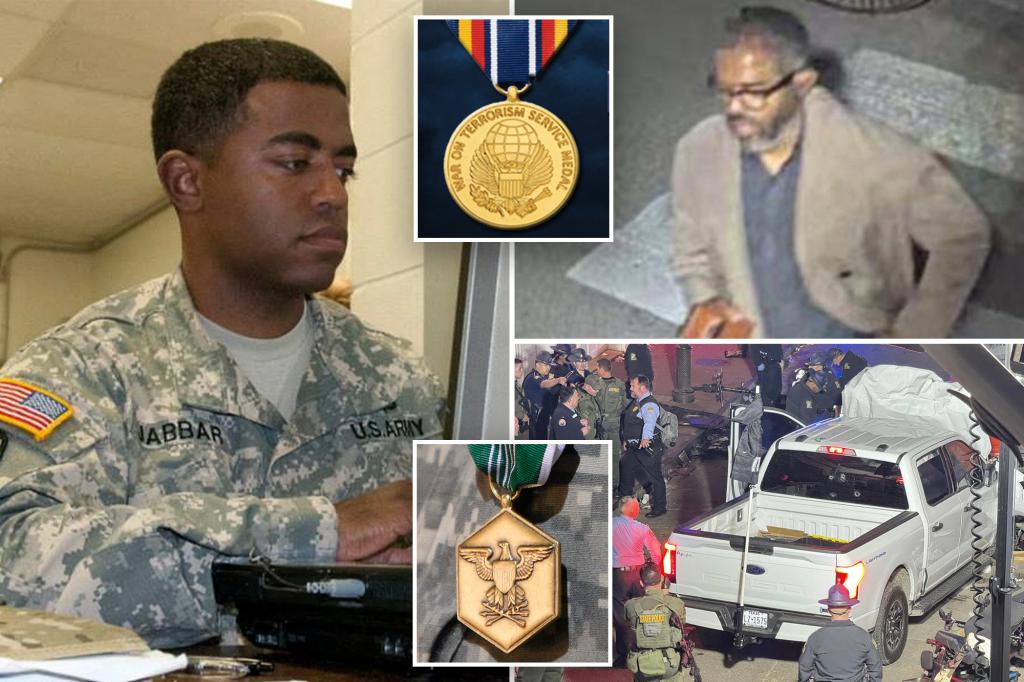Shamsud-Din Jabbar, a 42-year-old Texas native residing in New Orleans, perpetrated a deadly terrorist attack on New Year’s Day, shockingly juxtaposing his violent act with a decorated military career. Jabbar’s military service, spanning from 2007 to 2020, saw him rise to the rank of staff sergeant and accumulate a significant number of awards and commendations. His record included 23 honors, ranging from medals recognizing good conduct and achievement to badges signifying specialized skills. Notably, he was awarded the Global War on Terrorism Service Medal, a distinction granted to personnel serving in various capacities related to the global war on terror, including those deployed to Afghanistan and Iraq. Jabbar’s deployment to Afghanistan between 2009 and 2010 further underscores his direct involvement in the conflict. The contrast between his military service and his subsequent act of terrorism raises profound questions about the complexities of radicalization and the challenges of identifying potential threats within seemingly integrated individuals.
Jabbar’s military trajectory began with his enlistment in 2007. He initially served in human resources and information technology roles before his deployment to Afghanistan. This period of active duty exposed him to the realities of war and likely shaped his experiences and perspectives. Upon his return, he transitioned to the Army Reserve in 2015, continuing his service until 2020. During his military career, Jabbar earned several accolades, including the Army Good Conduct Medal, the Army Achievement Medal, and the Army Commendation Medal. These awards suggest a level of competence and adherence to military standards, further complicating the narrative of his radicalization. He also received the Driver and Mechanic Badge, recognizing his proficiency in vehicle operation and maintenance, a skillset tragically exploited in his attack. The accumulation of these honors paints a picture of a seemingly successful military career, making his subsequent actions all the more perplexing and highlighting the difficulty in predicting or preventing such acts of violence.
The horrific events of New Year’s Day unfolded as Jabbar, fueled by extremist ideology, drove a pickup truck into a crowd of revelers on Bourbon Street in New Orleans. The attack, occurring around 3 a.m., resulted in the deaths of 14 people and left dozens more injured. The deliberate nature of the act, coupled with Jabbar’s online pronouncements of allegiance to ISIS and his expressed desire to kill, firmly established the incident as an act of terrorism. The FBI’s assessment of the attack as premeditated and driven by extremist motives underscored the severity of the crime and the calculated nature of Jabbar’s actions. The attack sent shockwaves through the community, leaving many grappling with the senseless violence and the realization that the perpetrator was a former member of the military who had once sworn to protect his country.
In the immediate aftermath of the attack, law enforcement officers engaged Jabbar in a firefight, ultimately resulting in his death. The swift response prevented further casualties but also tragically ended any possibility of gaining a deeper understanding of Jabbar’s motivations and the path that led him to commit such a horrific act. The investigation into the attack revealed disturbing evidence of Jabbar’s radicalization, including social media posts where he professed loyalty to ISIS and expressed his intent to inflict harm. These online pronouncements, made just minutes before the attack, provided chilling insights into his mindset and confirmed the terrorist nature of his actions. The investigation continues to explore the extent of his radicalization and whether he acted alone or as part of a larger network.
The case of Shamsud-Din Jabbar presents a complex and troubling paradox. A decorated military veteran, seemingly integrated into American society, ultimately perpetrated a horrific act of terrorism. His military service, marked by awards and commendations, stands in stark contrast to his final act of violence. The tragedy underscores the insidious nature of radicalization and the challenges of identifying and mitigating extremist ideologies, even within institutions like the military. Jabbar’s story raises critical questions about the effectiveness of current screening and monitoring processes, the potential vulnerabilities within seemingly well-adjusted individuals, and the need for enhanced strategies to prevent radicalization and detect potential threats.
The attack serves as a stark reminder of the ongoing threat of terrorism and the diverse forms it can take. It highlights the importance of vigilance, community resilience, and the need for continued efforts to combat extremism in all its manifestations. The tragedy also underscores the importance of providing support and resources to those affected by terrorism, both directly and indirectly. The healing process for the victims, their families, and the community will be long and challenging, requiring a collective effort to rebuild and restore a sense of security and trust. The case of Shamsud-Din Jabbar will undoubtedly continue to be studied and analyzed in the hope of preventing similar tragedies in the future.










